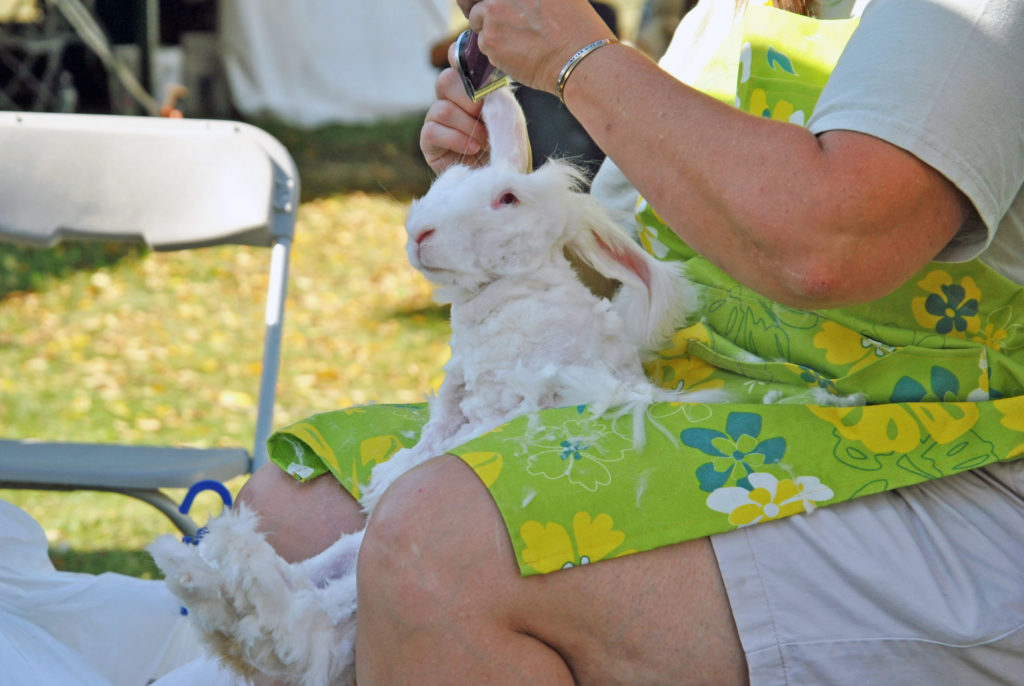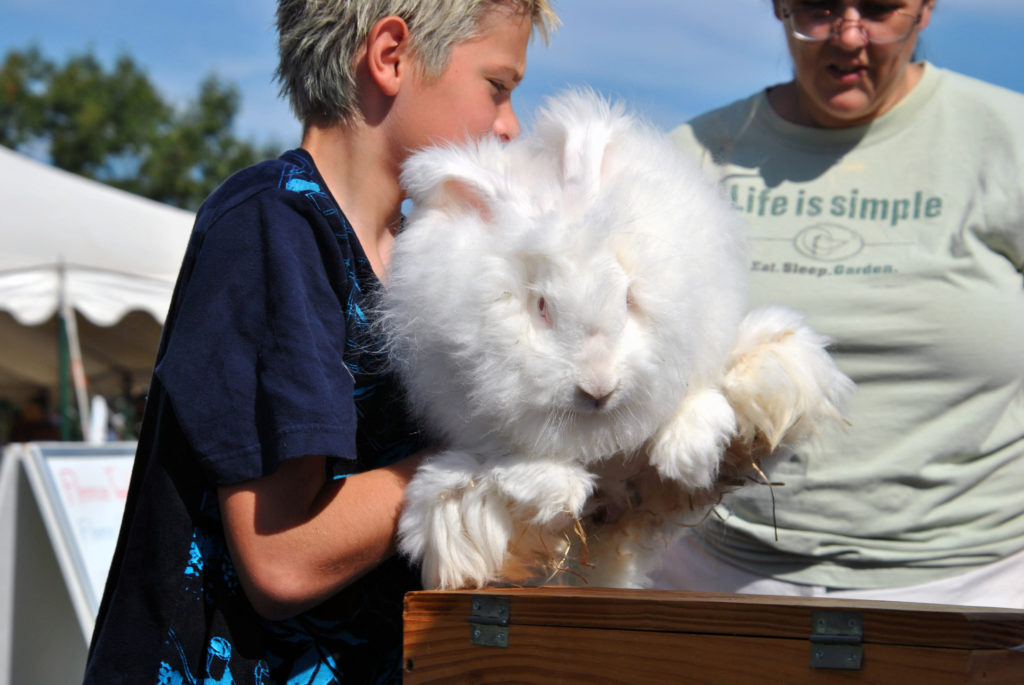The basics of shearing an Angora rabbit
Raising Angora rabbits for wool is a lucrative, easy way to generate high-quality fiber. Certain kinds of Angora rabbits — the ones that generate the most and best fiber, of course — require regular shearing rather than going through a quarterly shedding like other breeds. Shearing an Angora rabbit is a delicate but, ultimately, fairly simple process that takes a little bit of patience, care and skill with sharp objects.
Of the five Angora rabbit breeds used for fiber production — English, French, Satin, Giant and German Angoras — the German Angoras are the most productive fiber-producing breed, generating between three-quarters and a pound of wool every year. However, while other Angora rabbits can be plucked for their fiber, German Angora rabbits require shearing.
“The German is the only Angora rabbit that does not have the shedding gene, so you have to clip them,” explained Jenny Smith, owner of Underhill Fiber Farm at Gorham, Maine. “The others all shed every three months. Pure Germans are bred specifically for wool production, but they only come in white.”
Robin Ford, co-owner of Growing a Rabbit Tree rabbitry in Newcastle, Maine, led a workshop on harvesting wool from German Angora rabbits at the Maine Organic Farmers and Gardeners Association’s 43rd annual Common Ground Fair in 2019.
“Shearing a German [Angora] takes about 45 minutes,” Ford said.
Over the course of the workshop, Ford sheared from her albino German Angora rabbit, Andrew, who was 2 and a half years old. Ford said that Angora rabbits can be sheared starting when they are one to three months old. Angora rabbit wool is ready to shear when it has grown to between 3 and 5 inches in length.
Ford used a pair of standard electric clippers to shear Andrew, though some shearers prefer to use scissors; the noise from clippers can frighten some rabbits.

First, Ford let the rabbit lay on the table as she sheared his back. Then, she lifted his chin to remove the wool from his neck and chest.
“Go slow over the mattes,” Ford said, pointing out patches of fur that had knotted and clumped together. “The matted parts are good for felting.”
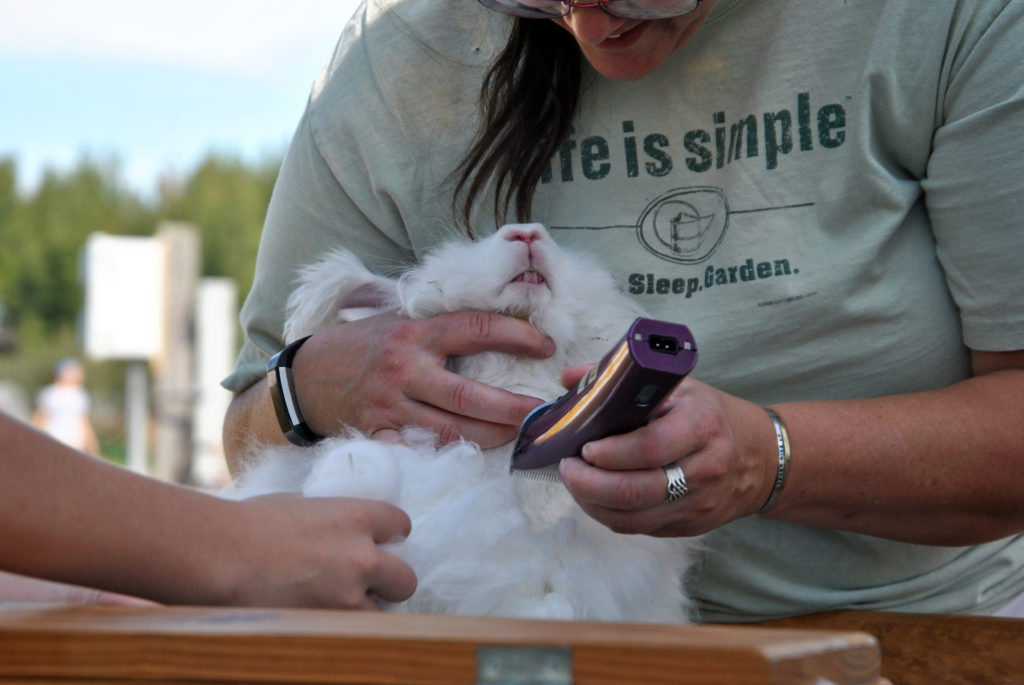
She held Andrew upright between her knees to shear his head and ears.
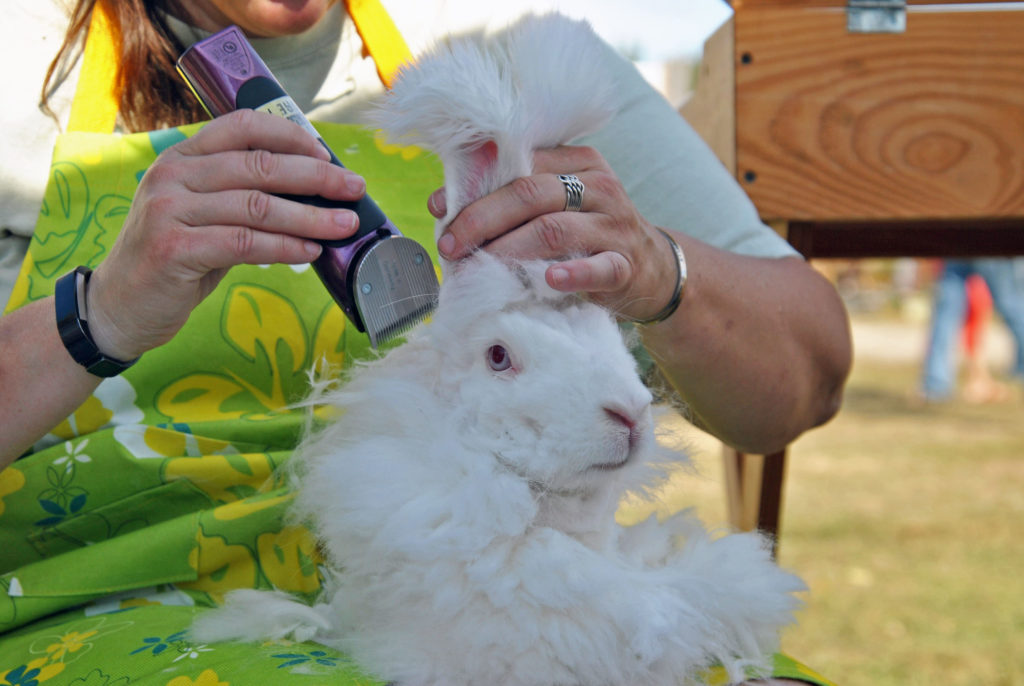
Shearing an Angora rabbit’s ears. | Photo by Sam Schipani ![]()
Shearing an Angora rabbit’s ears. | Photo by Sam Schipani 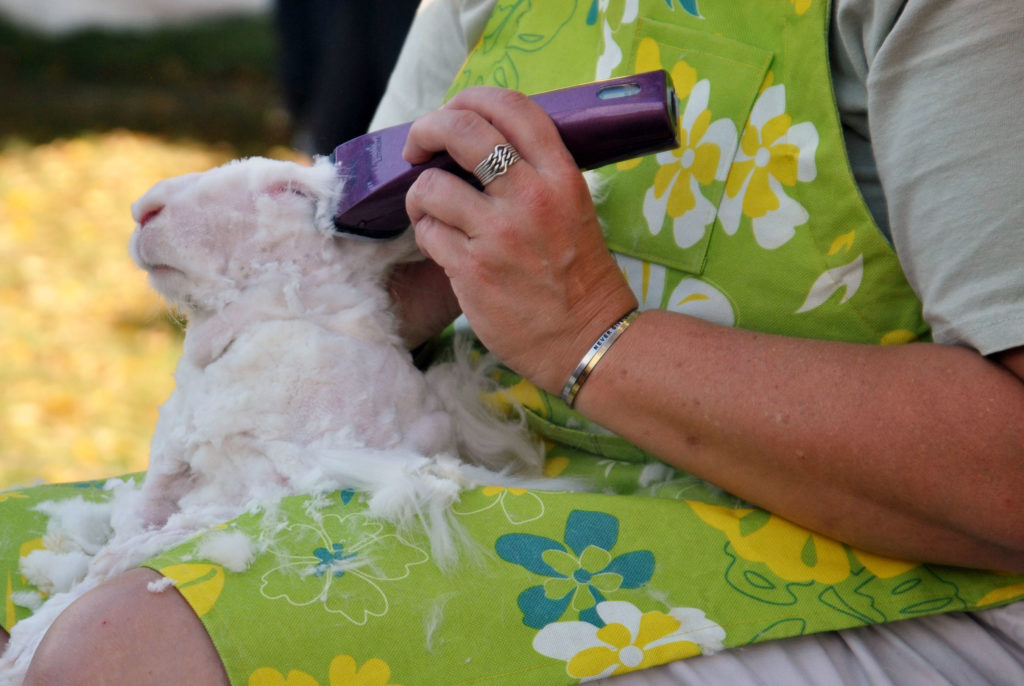
Shearing an Angora rabbit’s head. | Photo by Sam Schipani
For the underside, Ford demonstrated two techniques for steadying the rabbit: first, holding the rabbit by the ears between her knees, and second, gently clamping the rabbit’s head under her armpit, which she said she prefers.
![]()
Method 1: Holding an Angora rabbit by the ears between your knees to steady it for shearing. | Photo by Sam Schipani 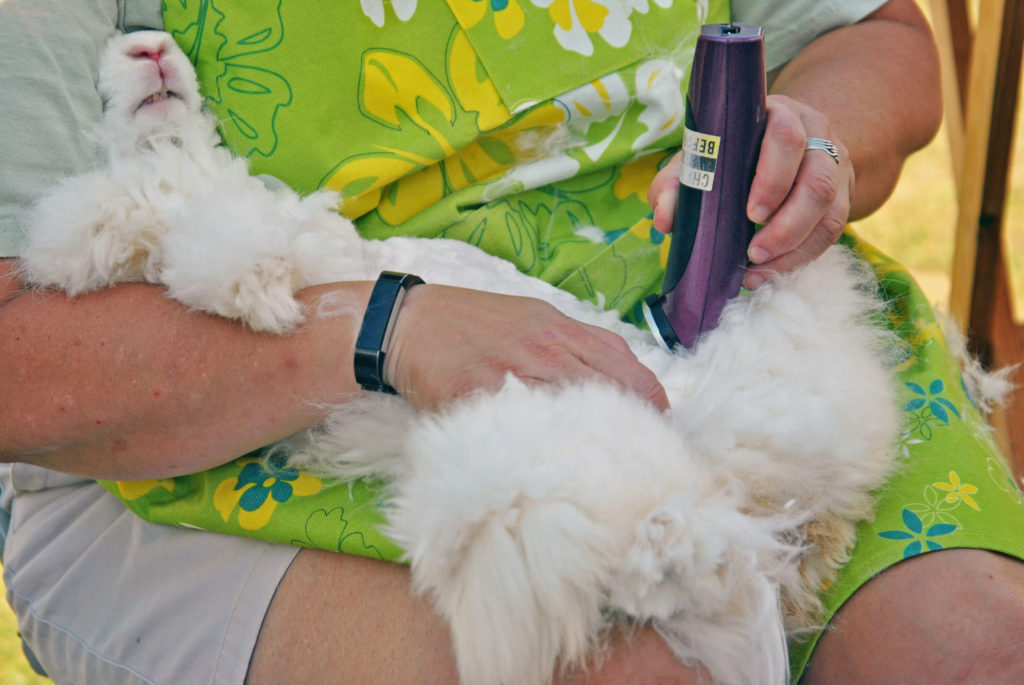
Method 2: Holding an Angora rabbit’s head under your armpit to steady it for shearing. | Photo by Sam Schipani
Ford pointed out that the wool around the heels and rear are dirty and should be removed carefully, away from the pristine wool that will be spun or sold. Ford also said to deal with the rabbit’s behavioral quirks as they come.

“If they want to flip, I let them flip,” Ford said. “[The bucks] sometimes feel a little amorous and that gets in the way.”
Finally, she sheared Andrew’s legs one at a time and clipped his toenails.

Ford’s method is easy and efficient, but Smith said that there are many techniques to shearing an Angora rabbit, as long as you take care not to cut the rabbit’s skin and remove as much fur as you can. (Angora rabbits have a fair amount of extra skin underneath all that fluff; both Ford and Smith recommended smoothing the skin so it is taut as you go.)
![]()
Angora rabbit before shearing. | Photo by Sam Schipani 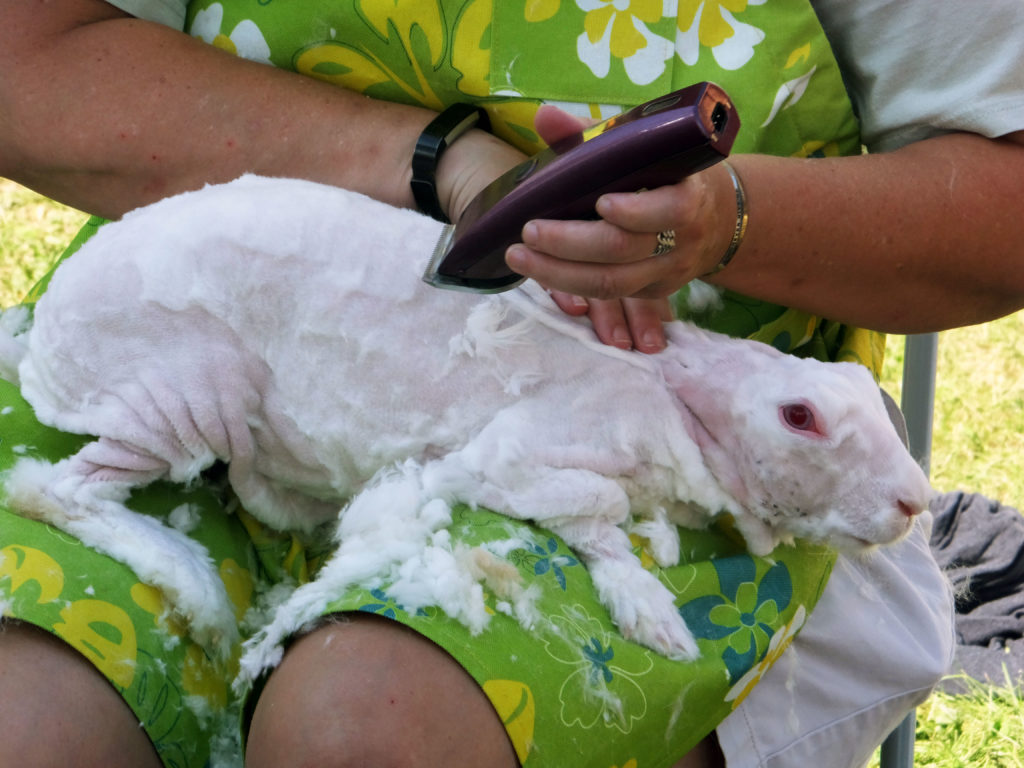
Angora rabbit after shearing. | Photo by Sam Schipani
“There’s no right or wrong way,” Smith said. “How you get the fiber off and the quality of it is about the quality of the fiber, not the [wellbeing of the] rabbit. Just don’t cut the skin. [Be careful not to] cut wrinkly parts and around their ears.”

